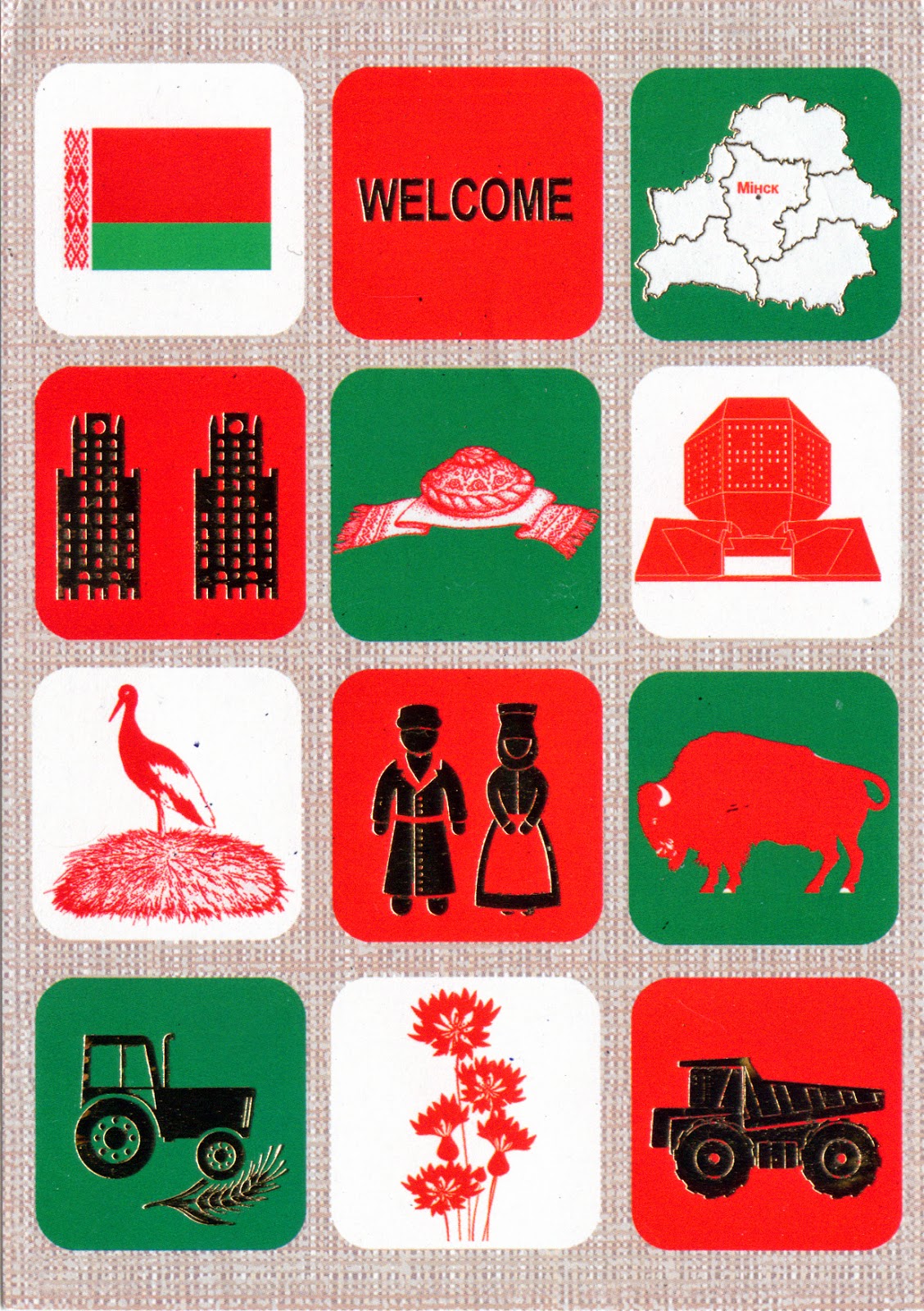 |
| 0245 Belarus map |
History: Many of the Russian principalities were first gathered under the flag of Kievan Rus, its dissolution in the 13th century following the Tatars attacks leading to the separation of northern Russians from Belarusian (White Russians) and Ukrainians. Moscow principality, became more stronger, shook the Tartar yoke in the late 15th century, conquering many of the Russian lands and becoming Grand Duchy of Moscow. Starting with Ivan the Terrible, the rulers took the title of "Grand Duke of all the Russias", but White Ruthenia (Belarus) and Ukraine remained under the rule of Grand Duchy of Lithuania (subsequent Polish–Lithuanian Commonwealth) until 1795, when both were annexed by the Russian Empire (except a small part of Ukraine, Galicia, which remained under austrian control).
Language: Belarusian, Russian, Ukrainian, and Ruthenian have a high degree of mutual intelligibility, i.e. the speakers of any of these languages can readily understand without a previous study, and without the need for translation, many scholars claiming that they are dialects of the same language, and not different languages.
Name: "Belarus" corresponds literally with the term "White Rus" (White Ruthenia). The name first appeared in the chronicles of Jan of Czarnków (1381), as "Alba Russia" (in latin), and its first use to refer to Belarus was in the late 16th century. Regarding the meaning of the appellation "white", opinions are divided, two being more reliable: one that claims that relate to the lands populated by early Christianized Slavs (in opposition to Black Ruthenia, predominantly inhabited by pagan Balts), and one that claims that relate to the old Ruthenian lands that were not conquered by the Tatars.
Of course that all these arguments are less important than the inhabitants will, so if the Belarusians want to live in their own state, so be it.
With strictly reference to the map on the postcard 0245, it shows few buildings and animals on which its author considered representative for Belarus, namely (from west to east):
• Unknown Soldier Monument (near the Brest Fortress - included in the Tentative List of UNESCO's World Heritage Sites in 2004) - the second largest war monument in the former Soviet Union, a tribute to the soviet soldiers who defended the fortress during the first days of Operation Barbarossa.
• a wisent from Białowieża Forest, a UNESCO World Heritage Site from 1979, under the name Belovezhskaya Pushcha / Białowieża Forest.
• Mir Castle Complex, listed by UNESCO as a World Heritage Site in 2000
• The Kalozha church of Sts. Boris and Gleb, from Hrodna / Grodno, included in the Tentative List of UNESCO's World Heritage Sites in 2004.
• National Library of Belarus from Minsk.
• a building that I haven't managed to identify it.
• cathedral of Saint Anthony of Padua from Pastavy.
• The Cathedral of Holy Wisdom (Saint Sophia Cathedral) in Polotsk.
• a white stork (Belarus is the third country in number of specimens in Europe).
• Rathaus (Coloncha, former City Hall from Vitebsk).
• Saint Nicholas Convent from Mogilev, which is in the process of becoming a UNESCO World Heritage.
• a building that I haven't managed to identify it.
• a building that I haven't managed to identify it.
The Belarusian pair on the left, dressed in traditional clothing, left me speechless, and, frankly, is why I wanted this postcard.
In the postcard 1259 are depicted, in the colors of national flag, the map of the country, images of representative buildings and animals, the national costume, and images suggesting the main economic sectors. The current national flag of Belarus is a red and green flag, with a white and red ornament pattern placed at the hoist (designed in 1917 by Matrena Markevich). The current design was introduced in 2012, and is a modification of the 1951 flag. Changes made to the Soviet-era flag were the removal of symbols of communism.
About the stamps
On the postcard 0245
The first and the last stamp is part of the 12th series of definitive stamps Garden Flowers, about which I wrote here. The second and the third is part of the 11th series of definitive stamps Wild animals, about which I wrote here.
On the postcard 1259
The stamp is part of the series The Central Botanical Garden of NAS of Belarus - Flowers, designed by Yelena Medved and issued on August 22, 2014. Letter M is equal to the air-mail tariff of a postcard abroad.
• Dahlia / Diadema
• Peony / Pamyati Gagarina - It's on the postcard 0245
• Rose / Gloria Dei
• Lily / Zorenka
Sender 0245: Nadia Prishchepova (direct swap)
Sent from Vitebsk (Vitebsk / Belarus), on 28.04.2012
Design: Alena and Mikhail Farkhutdzinau
Sender 1259: Lena / ElenaMelek (postcrossing) BY-1395956
Sent from Minsk (Minsk / Belarus), on 20.09.2014



Interesting, I don't know much about Belarus. Gomel is a name I've heard before, the postcard shows the Rumyantsev-Paskevich Palace in Gomel (http://ng.by/ru/7chudes?prod_ID=1639).
ReplyDeleteFlag of Belarus
ReplyDelete